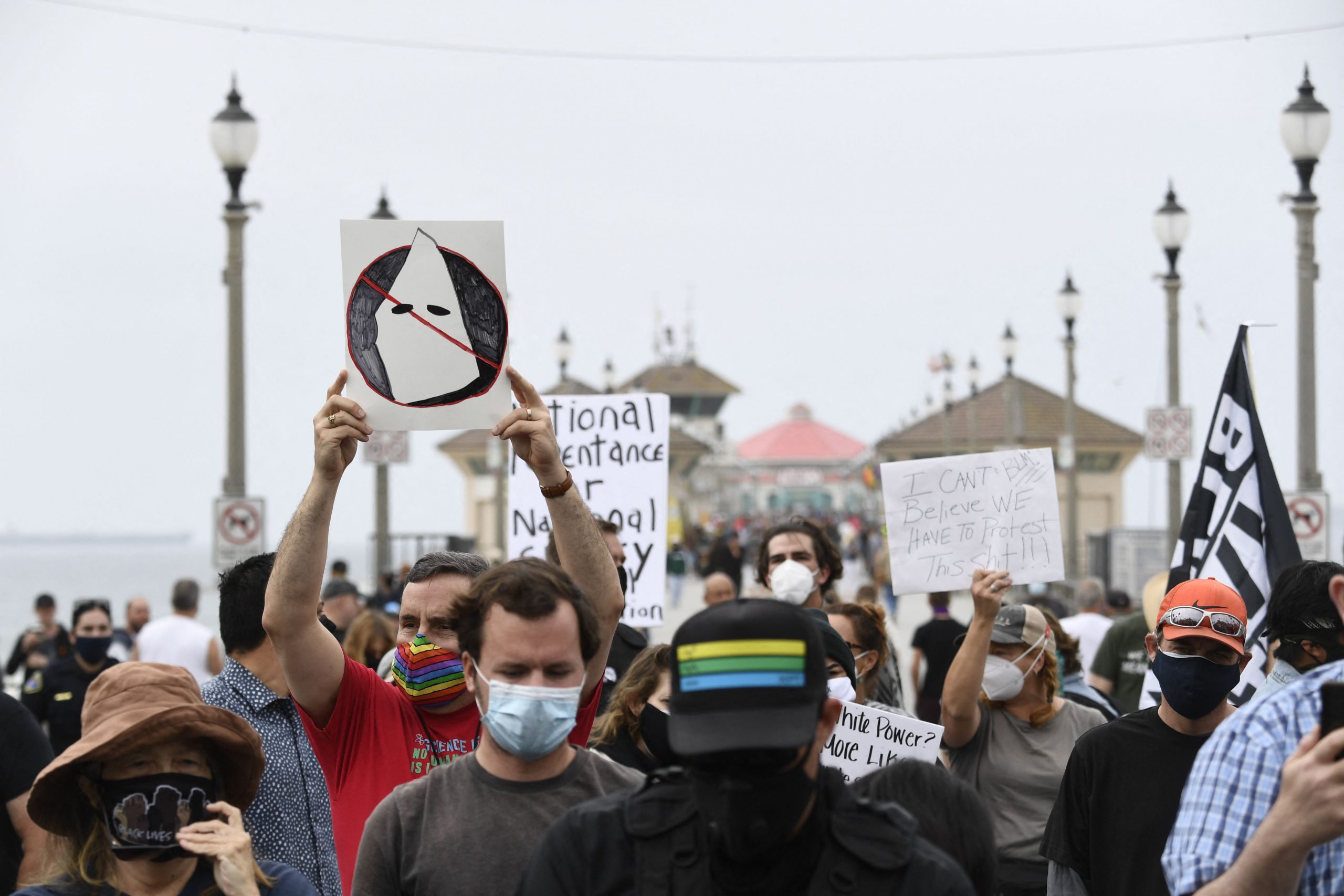The Ku Klux Klan (KKK), founded in 1865, is a white supremacist group that extended into almost every southern state by 1870. It became a sound piece for white southern resistance to the Republican Party’s Reconstruction-era policies that were aimed at growing political and economic equality for Black Americans.
According to History.com, the members of the KKK waged an underground campaign directed at white and Black Republican leaders. While Congress passed legislation aimed to stem the Klan terrorism, the organisation saw its primary goal – the reestablishment of white supremacy – fulfilled through Democratic victories in state legislatures across the South in the 1870s.
After facing a certain decline, white Protestant nativist groups revived the Klan in the early 20th century by staging rallies and burning crosses among other things. The civil rights movement of the 1960s also saw a rise of KKK activity that included bombings of Black schools and churches.
Founding of the Ku Klux Klan
According to History.com, a group of former Confederate veterans founded the first branch of the Ku Klux Klan as a social club in Pulaski, Tennessee, in 1865. The organisation’s name is supposedly derived from the Greek word “kyklos,” meaning circle. Leading Confederate general Nathan Bedford Forrest was chosen as the first leader, or “grand wizard,” of the Klan.
Ku Klux Klan’s violence in the South
From 1867 onward, Black participation became the most radical aspect of the Reconstruction as Black people won elections to southern state governments and even to the US Congress. Following this, campaigns were launched against Republican leaders and voters (both Black and white) in an effort to reverse the policies of Radical Reconstruction. They were joined by Knights of the White Camelia and the White Brotherhood.
During the 1867-1868 constitutional conventions, at least 10% of the Black legislators were the victims of violence during Reconstruction. 7 were killed. White Republicans and Black institutions which were the symbols of Black autonomy became the targets for Klan attacks.
The Ku Klux Klan and the End of Reconstruction
After spreading its roots in the southern white states, the KKK saw a big rise in followers. After 1870, state governments in the South asked Congress for help that resulted in the creation of three Enforcement Acts – the strongest one was the Ku Klux Klan Act of 1871.
This act designated certain crimes done by them as federal offenses, including conspiracies to deprive citizens of the right to hold office. This also gave the President the power to suspend the writ of habeas corpus and arrest the accused individuals with no charge.
This expansion of federal authority made the Democrats angry and alarmed the republicans. After the 1870s, white supremacy strengthened its hold on the southern states as the Reconstruction waned.
Revival of the Ku Klux Klan
In 1915, white Protestants organised a rally to revive the KKK near Atlanta, Georgia. As per reports, the second generation of the Klan was not only anti-Black but also stood against the Roman Catholics, Jews, foreigners and organized labor. As America saw a surge in immigration, fears of communist revolution similar to Bolshevik triumph in Russia in 1917 started making noise. The KKK, during its peak in the 1920s, reportedly exceeded 4 million people in the US.
Great Depression
The Great Depression of the 1930s cut down the Klan’s membership and the organisation temporarily disbanded in 1944.
In 1965, President Lyndon Johnson condemned the Klan in a public speech and announced the arrest of four Klansmen in connection with a murder.







